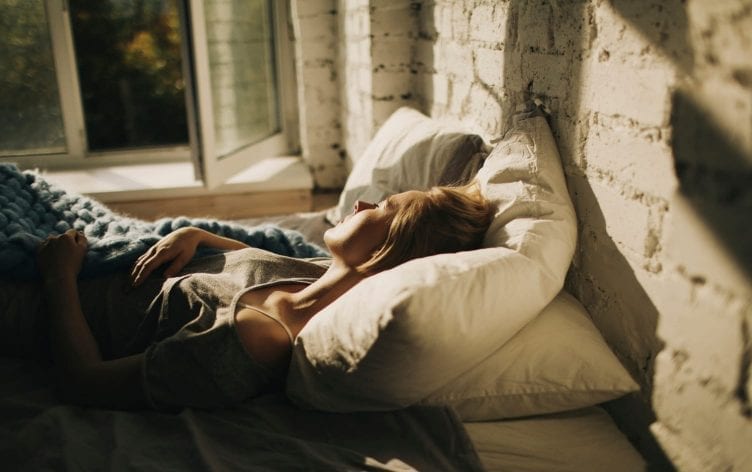
5 Sleeping Mistakes You’re Probably Making
Sleep has made a big comeback. It might seem as if something so essential could never go out of style, but in our busy, tech-enabled world, sleep had become an afterthought. However, recently, books like Arianna Huffington’s “The Sleep Revolution,” sparked renewed interest in the topic of getting adequate sleep for overall health. So much so it’s back in the mainstream social conversation. After all, numerous studies show sleep deprivation can have negative cognitive effects and impair motor function.
You’ve likely heard tips for getting better sleep like putting away your phone an hour before bed, but what about mistakes we might not even realize we’re making? We’ve broken down a few you should know.

The National Sleep Foundation recommends sleeping between 60–67ºF for optimal sleep. One study even showed that sleeping in a room set to 66ºF could help prevent metabolic diseases, like diabetes. While that’s too cold for most of us to function properly during the day, set your thermostat on a nightly schedule so you’ll be cool enough to sleep at night.
 SHEEX Performance sheets and pillowcases put an end to over-heating and other sleep-disrupting temperature fluctuations so you can start getting the great night’s sleep your body needs to perform at its best. SHEEX fabrics breathe 10x better than traditional cotton sheets, allowing air to circulate freely around your body to maintain an ideal sleep temperature. Our technical fibers wick moisture away from your skin 2x–3x better than cotton and facilitate faster evaporation, making sure you don’t wake up damp or sweaty.
SHEEX Performance sheets and pillowcases put an end to over-heating and other sleep-disrupting temperature fluctuations so you can start getting the great night’s sleep your body needs to perform at its best. SHEEX fabrics breathe 10x better than traditional cotton sheets, allowing air to circulate freely around your body to maintain an ideal sleep temperature. Our technical fibers wick moisture away from your skin 2x–3x better than cotton and facilitate faster evaporation, making sure you don’t wake up damp or sweaty.

If you can’t remember the last time you replaced your pillow, it’s probably time. Those fluffy headrests break down faster than we think, and the National Sleep Foundation recommends buying new ones about every two years. If you’re not sure, try folding your pillow in half. If it doesn’t spring back into shape immediately, it’s best to replace it. Pillows can be full of dust mites and dead skin, which can trigger allergies, so it’s best to renew often.

If you’re feverishly working on your laptop right before bed, don’t expect great sleep results. Set aside even 5 minutes to do some deep breathing, light stretching, reading or listening to calming music before you get in bed. Then, when you lay down, your body will be primed for sleep.

When you eat a lot of sugar or calories right before bed, your blood sugar climbs and then falls rapidly as you sleep, which could wake you up in the middle of the night. Also, the caffeine in chocolate can keep you up at night. For example, a 1.5-ounce Hershey’s chocolate bar contains 9 milligrams of caffeine, which is about three times as much as a cup of decaffeinated coffee. Chocolate also contains theobromine, a compound that can increase heart rate and keep you up.

Now that we know how essential sleep is, not getting enough sleep can actually cause anxiety. Once you’ve gotten in bed and you’re sure your alarm is set properly, it’s best not to look at the clock again until your alarm goes off. If you have trouble falling asleep, watching the time tick away is going to make your mind race, and your brain won’t be able to calm down so you can get to sleep. And, if you wake up in the middle of the night, resist the urge to check the clock and try meditating or focusing on your breathing instead.






























